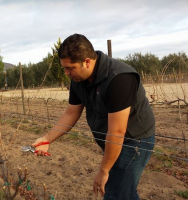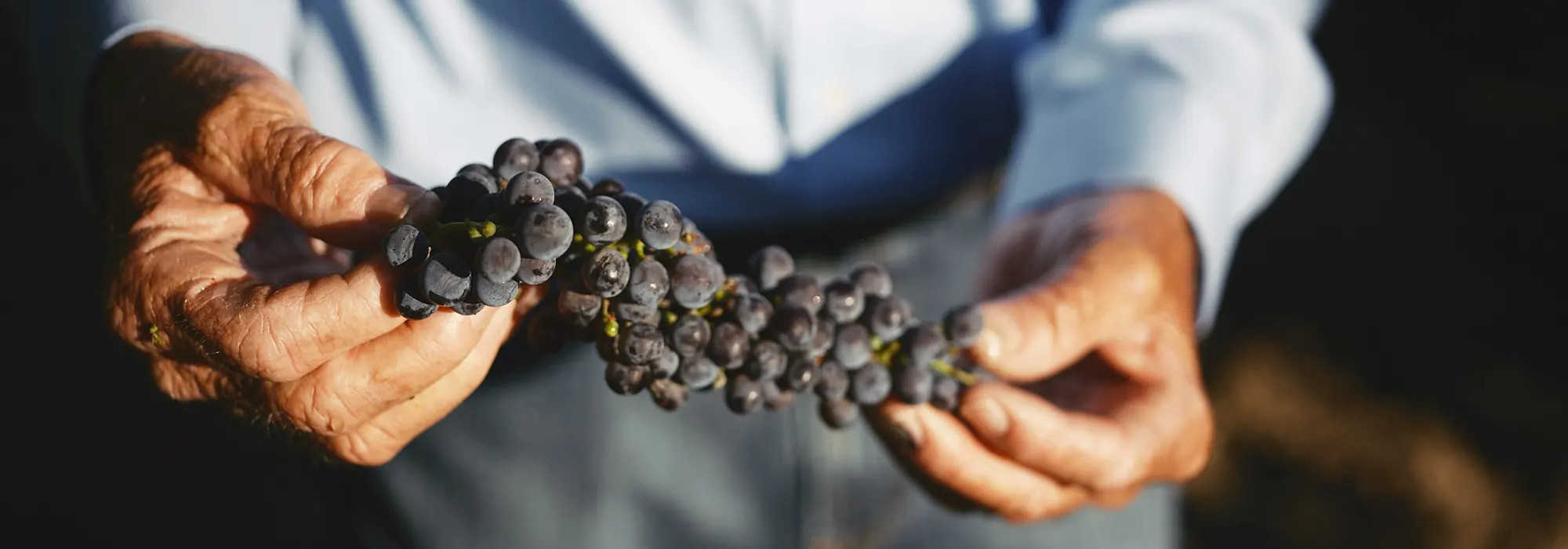Your Toughest Wine Questions Answered!

Temecula Valley Southern California Wine Country Rockstars Weigh in on Common Questions about Wine
Wine is supposed to help us relax, connect with others, and provide a feast for all the senses. But then why does it sometimes seem so complicated? From indecipherable tasting notes to words like “dry,” “tannic,” “aromatic,” and “sulfites” that leave us scratching our heads, it’s a wonder we don’t need a PhD to drink the stuff!
Fortunately, the experienced and deeply knowledgeable rockstars of Temecula Valley Southern California Wine Country are here to help! We tapped a few of our best and brightest to answer some of your most frequently-asked wine questions.
Q: What are “tannins”?

A. Renato Saís, Winemaker, Akash Winery
Wine aficionados talk a lot about tannins, but what are they? Tannin basically refers to the dryness, bitterness, and astringency of a wine (typically red wine). It is a naturally occurring polyphenol found in plants, seeds, bark, wood, leaves, and the fruit skins of grapes used to produce the wine. Tannins can also come from the barrels that are used when aging many wines. These wood tannins are absorbed into the wine where various flavors become apparent.
Tannins start out tasting really dry, and it is through aging and manipulation, that we are able to transform a harsh “tannic” wine into a smooth, elegant, developed red wine. Tannins can be manipulated in different ways in the different steps of winemaking: Crushing and destemming, fermentation, aging and fining of the wine prior to bottling.
Because tannins are found in the skins of grapes, they are more present in red wines than they are in rosé or white wines. This is because red wines are fermented with skins, whereas whites and rosés typically aren’t.
Q. Speaking of dryness… What does it mean when we say a wine is “dry”?

A. Gus Vizgirda, Winemaker, Wilson Creek Winery:
It means the wine has a bad sense of humor.
Kidding… Simply put – “dry” is the opposite of “sweet.”
All wines start out as sweet juice made from the particular grape varietal; for example, Chardonnay or Cabernet Sauvignon. During the fermentation process, yeast consumes the sugar producing alcohol. So initially, the winemaker starts with a tank that’s 100% Chardonnay grape juice, and 0% wine. As fermentation progresses: Day 3 of fermentation 83% juice and 17% wine, Day 5 of fermentation 53% juice and 47% wine, so-on and so-on. As fermentation continues more sweet grape juice is fermented and converted into wine until the desired “Dryness” level is obtained. In general a “Dry” wine will have a grape sugar level at 0.4 – 0.6% (99.6 – 99.4% of the grape juice has been fermented by the yeast).
An interesting note is that the fruitiness of the grape remains with the dry fermented wine. In some cases, this fruitiness is intense and is often confused with sweetness.
Sweet wines are wines where not all of the sweet grape juice is fermented in the wine.
Q. Ok… Dry is the opposite of sweet, which can be confused with fruitiness. Can you explain what the difference is between a sweet and a fruity wine?

A. Danaé Wegner, Tasting Room Manager, Peltzer Winery
A balanced wine encompasses a few elements that need to be cohesive: tannin, acid, sugar, and alcohol. Sugar is the most recognizable to our palates naturally, which is why us wine nerds often call sweet wines the “gateway wines.”
The difference between sweet wine and fruity wine is simple: we can measure sugar, but fruit is perceived. For example, there are grapes that are wildly aromatic and exude sweet floral notes like lilac and orange blossom, or ripe fruits like strawberry and white peach such as Viognier, Gewürztraminer, and Muscat. These wines may have a perceived sweetness due to the recognition of sweeter fruit notes but could technically be dry.
A term y’all may have heard thrown around your local tasting room is “residual sugar” or R.S. This is the sugar content in the wine after the winemaker stops the fermentation process. A sweet wine ranges from 3% R.S. to upwards of 15%. This resulting percentage goes all the way back to farming!
In the vineyard, we measure sugar level in Brix, which is sugar by weight. As the berries ripen on the grapevine, their sugar level rises, which signals to the farmer that the fruit is ready to be harvested. A higher Brix level means a higher potential alcohol content because during fermentation, the natural and added yeast consume the sugar and produce alcohol, along with carbon dioxide and heat.
How do we enjoy both fruity and sweet wines? With sweeter wines, try an opposing, spicy food pairing like pepper jack cheese. With a fruity wine, try something that is also fruity to create a congruent pairing. Everyone’s palate is different, but we should all strive to find a purpose for every style of wine we encounter. Cheers!
Q. Why do some wines give me headaches?

A. Michelle Vener, Tasting Room & Wine Club General Manager, Fazeli Cellars
Okay…stating the obvious first – drinking too much and not hydrating will give you headaches. To avoid this, consume responsibly and hydrate. Let’s assume that this is not the problem. Next…
The common misconception is that wine headaches are caused by sulfites in wine. This is false. Sulfites do cause a few people sensitivity/allergy (1%) but they are found in so. many. things. From dried fruit, to deli meat, to tomato paste and even cereal- and the symptom would be more asthma-like, not a headache. If you aren’t having reactions from dried apricots and salami, you are likely not allergic to sulfites.
Tannin and histamines – ding ding ding…we have a winner! This is where it’s at folks. Some people have the misfortune of having a sensitivity/allergy to tannins, and histamines. This is caused by two different substances found in the skin and stem of the grapes. Without getting super geeky and going on about Phenolic flavonoids, biogenic amines and enzymatic reactions, suffice it to say that this is a real thing and there is a solution! If you suffer from this allergy you can take a histamine blocker (like Claritin) before enjoying a glass of wine and your problems will fade away (in more ways than one!).
Q. So how DO I know if I am allergic to sulfites?

A. Jennifer Buffington, Owner, Cougar Vineyard and Winery
Like many other allergens, the symptoms of an allergy to sulfites include: hives and itchiness, flushing, itchy throat, dizziness, trouble breathing and in some cases upset stomach, diarrhea and vomiting. People who suffer from asthma, are much more likely to have an allergy to sulfites.
A sulfite allergy is an adverse immune response. It is when the immune system reacts negatively to sulfites. It can be treated with antihistamines or oral steroids. In rare cases, it may cause anaphylaxis and an epinephrine auto injector will be necessary to treat the person.
Sulfites are a natural by-product of yeast metabolism in the wine making process, so all wine contains small amounts of sulfites. Some wine makers add sulfites which can cause allergic symptoms to be more intensified.


